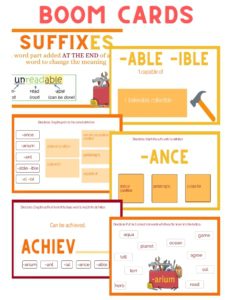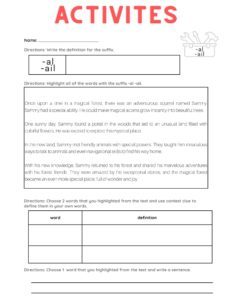Building Strong Reading Foundations: The Power of Vocabulary and Morphology
In the journey of education, one of the most critical aspects of developing a strong reading foundation is understanding vocabulary and morphology. By mastering prefixes, suffixes, and root words, students gain the tools they need to decode and comprehend thousands of unfamiliar words. This foundational knowledge is essential for reading fluency and overall academic success. Here’s why focusing on vocabulary and morphology is so important and how our innovative approach can make learning these skills both effective and engaging.
The Importance of Vocabulary and Morphology
Vocabulary encompasses the words we know and use. A robust vocabulary allows students to better understand texts, express themselves clearly, and engage more deeply with content. However, simply memorizing word lists isn’t enough. For lasting comprehension, students need to understand how words are built and how they function within sentences.
Morphology, the study of word formation, plays a pivotal role here. By understanding prefixes, suffixes, and root words, students can break down complex words into manageable parts. This skill enables them to tackle new and unfamiliar words with confidence, leading to improved reading comprehension and fluency.
Here’s how knowledge of common prefixes and suffixes benefits students:
- Decoding Unfamiliar Words: Knowing the most common prefixes (like “un-” or “pre-”) and suffixes (such as “-ing” or “-ed”) helps students break down and understand new words. For example, if students encounter the word “unhappiness,” they can use their knowledge of “un-” and “-ness” to deduce that it relates to the state of not being happy.
- Building a Larger Vocabulary: Understanding word parts enables students to recognize and infer the meanings of related words. For instance, knowing that “-able” means “capable of” can help students understand words like “readable,” “manageable,” and “enjoyable.”
- Improving Reading Comprehension: By seeing how word parts fit into different contexts, students gain a deeper understanding of both the individual words and the overall text. This understanding enhances their ability to grasp complex ideas and concepts.
Integrating Morphology with Reading Comprehension
To build a strong reading foundation, it’s essential to integrate vocabulary and morphology instruction with reading comprehension activities. That’s why our morphology unit is designed to be both comprehensive and contextual. By embedding morphological analysis within reading comprehension exercises, students can see prefixes and suffixes in action and better understand their meanings and uses.
Here’s how our approach works:
- Contextual Learning: Students encounter prefixes and suffixes within the context of actual texts, helping them see how these word parts function in different situations. This contextual learning reinforces their understanding and application of morphology.
- Interactive Reinforcement: Our Boom Card deck adds an interactive and fun element to the learning process. These digital cards are designed to reinforce morphology concepts through engaging activities and games.
- Self-Grading and Assessment: One of the standout features of Boom Cards is that they are self-grading. This functionality not only makes reinforcement enjoyable but also allows for quick and easy assessment of student understanding. Teachers can track progress and identify areas where additional support may be needed.
Making Learning Fun and Effective
Our Boom Card deck, combined with our morphology unit, provides an interactive way for students to practice and solidify their understanding of vocabulary and morphology. The fun and engaging format helps maintain student interest while ensuring that key concepts are effectively reinforced.
By integrating morphology with reading comprehension and utilizing interactive tools like Boom Cards, we can support students in developing a strong reading foundation. This approach not only enhances their ability to decode and understand words but also builds their confidence and enjoyment in reading.
Incorporating these strategies into your teaching can lead to significant improvements in student literacy and academic performance. Let’s equip our students with the skills they need to become proficient and enthusiastic readers!










